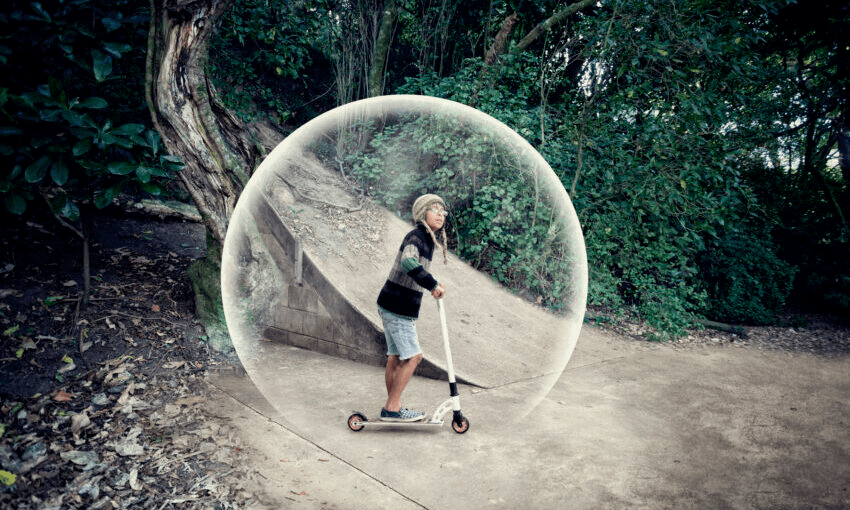A lot of people are very reasonably concerned about the implications of schools and early childhood education reopening. Siouxsie Wiles explains what the latest studies can tell us about the risks.
When Aotearoa New Zealand heads to alert level three, schools and early child education centres will be opening again. They will only be available for those children up to Year 10 whose parents aren’t able to keep them home.
I’ve received lots of messages and questions from concerned parents and teachers. Is having kids back at school, daycare or kindergarten the right thing to do? Aren’t children just going to spread Covid-19 back to their bubbles?
These are all excellent questions. Thanks to a review of the literature by Dr Alasdair Munro and the Don’t Forget the Bubbles team in the UK, I can fill you in on the latest studies and provide some answers.
How often do children get Covid-19?
Not very often. Which is surprising, as kids and older people are usually the most vulnerable to getting sick. The first data we had showing this came from the WHO’s Joint China Mission investigating the outbreak in Wuhan. They found that Covid-19 in children seemed to be relatively rare. Just 2.4% of the total reported cases were in those under the age of 19. A recent analysis of over 149,000 laboratory-confirmed Covid-19 cases in the US showed children and young adults under 18 made up just 1.7% of those cases. In Italy it was 1.2% and in Spain 0.8%. In Japan it’s been reported to be 3.2%.
Here in New Zealand, 10.2% of our confirmed and probable cases have been people under the age of 19. Half of those were aged 15-19. The 10-14 year olds have made up 2.8% of our cases. For those aged between 5 and 9 it’s 0.9%, and for those under 4, it’s 1.4%.
Interestingly, those numbers are even lower when we look at confirmed cases only: 0.45% for under 4s, 0.18% for 5-9s, and 2.25% for 10 to 14 year olds. See Chris McDowall’s chart below.
What happens to those children that do get Covid-19?
They mostly get a mild infection. Some children have had a more severe infection. From the WHO Joint China Mission, 2.5% had a severe illness and 0.2% critical disease. Globally, a small number of children have, tragically, died. In other words, it’s very rare for children to be badly affected by Covid-19, even if they have underlying health issues.
While we’re still not quite sure why, the virus that causes Covid-19 is a coronavirus. So in the same way that children’s immune systems are very good at fighting off other coronaviruses, they seem to be very good at fighting off this one too.
Are children likely to be playing a big part in spreading Covid-19?
Surprisingly, the evidence suggest not. One worry was that children with mild symptoms or no symptoms at all might be spreading the virus without us realising that. But testing of the general public in Iceland and Italy suggests this isn’t the case. I wrote about the Icelandic study here. Of the 848 children under the age of 10 who were tested, none tested positive. In Vo in Italy, they swabbed 70% of the residents of the town. Again, none of the 234 under 10s tested positive, despite some of them living with people with Covid-19.
Another study which looked at data from China, Singapore, South Korea, Japan, and Iran and identified 31 household transmission clusters. Just three of these had a child as the index case. During the WHO Joint China Mission, people interviewed by the team could not recall any cases where Covid-19 was spread from a child to an adult.
What about the Marist cluster?
Marist College is a Catholic secondary school for girls in Auckland. It is one of our largest clusters, with 93 cases to date. It’s important to remember that just because it is known as the Marist cluster, that doesn’t mean all the cases are in children from the school or that children were involved in transmitting the virus. Ashley Bloomfied has confirmed that it did not begin with a student. A large portion of those affected are teachers, parents, and their families and they could have become infected through social events or other contact. Remember, we also had a teenager at a Dunedin school test positive and that didn’t turn into a large cluster.
Should we be testing children and only letting them go to school if they are negative?
No. I don’t think this is a good strategy. Getting swabbed for the Covid-19 test is not pleasant, especially for little kids. And remember that a negative test will only tell you the person was negative when they were tested. They could be incubating the virus and test positive a few days later. This kind of testing is not a good use of our resources when there is so little evidence that children play a big role in the spread of Covid-19.
This story was updated on April 23 to correct statistics on the proportion of NZ Covid-19 cases who are children.

